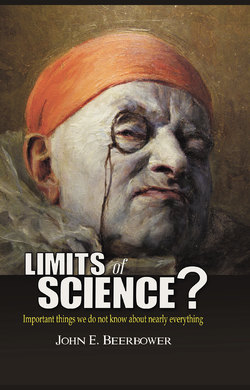Читать книгу Limits of Science? - John E. Beerbower - Страница 15
На сайте Литреса книга снята с продажи.
Probabilities
ОглавлениеThere is something more to say about the alleged problem of induction. It is obvious that the fact two events happen in sequence once does not mean that they will or are even likely to do so again. Even the fact that the two events happen in sequence twice (or one hundred times) does not guarantee that they will do so again. Even if there has never been a recorded instance in which A was not followed by B, one cannot say that it is inevitable that the next time A occurs, B will follow. We might say that we can at least assert that it is likely. Philosophers supposedly have shown that the characterization of induction as a matter of probability does not solve the “problem.”14 But, regardless, I do not think that our understanding of induction is simply probabilistic.
More repeated observations of a pattern can give rise to a belief that it is possible (or more probable) that there is a causal relationship between them. But, what gives rise to a reasonable and justifiable belief that B will follow A is a theory of the relationship between them that explains why B will occur when A has occurred.15 This element is, again, the concept of causation and the belief in the necessity of causal relationships. Man’s apparently inherent belief in the existence of causation was discussed above. The nature of the causal relationship is set out in the theory. The theory explains why the observed pattern is expected to repeat itself. That theory will also often identify factors that could cause the pattern not to be repeated in a given instance.
Commonly, a theory will contain (explicitly or implicitly) the ceteris paribus condition, saying that if A occurs then B will necessarily follow if, but only if, all relevant things remain the same. The use of “an unspecifiable ceteris paribus (all else being equal) clause” is a technique used in efforts to “connect” deductive models to the real world. Peter Lipton, Inference to the Best Explanation (Routledge, 2004) (Second Edition), p.64. But, one would hope that the real life variations in the initial conditions that can be identified when the predictions do not materialize will make sense in terms of the relationship being presented by the theory. If so, then the theory provides a basis for understanding the events that occur, including the failure of a predicted B to follow A.
We can illustrate these issues with some simple examples.
